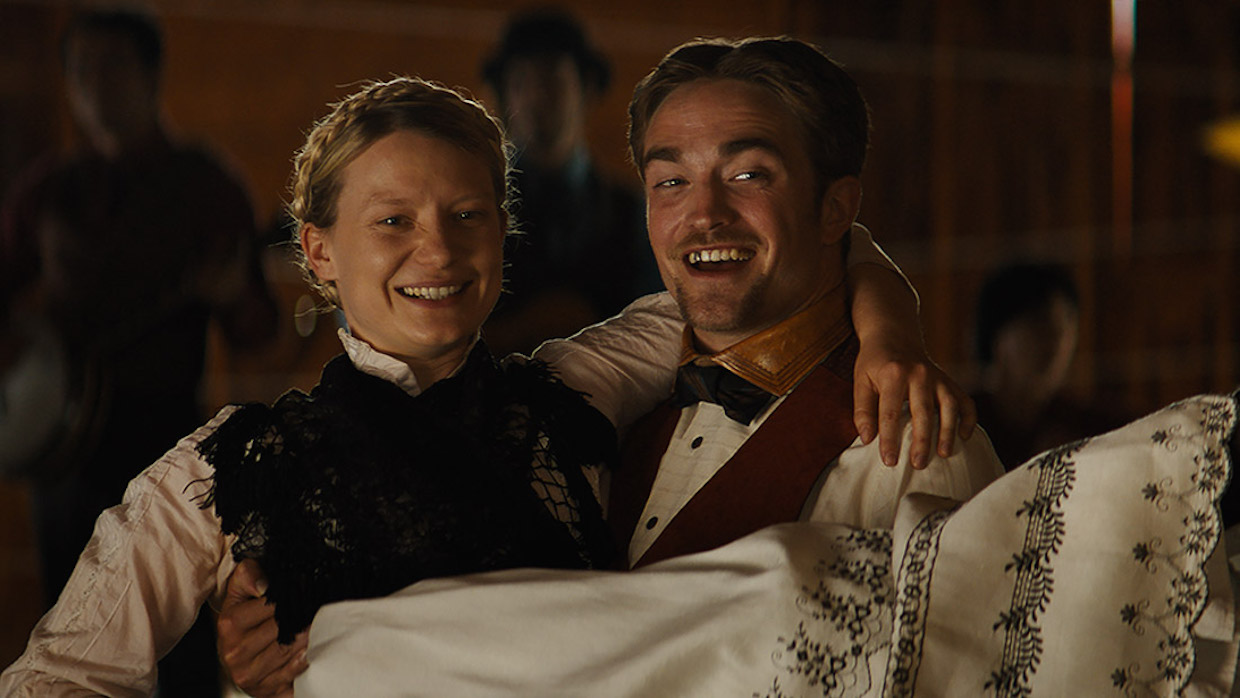 Back to selection
Back to selection
Melba Robichaux on Editing the Zellner Brothers’ Comedy/Western Damsel
 Damsel
Damsel Brothers David and Nathan Zellner are a reliable presence at the Sundance Film Festival. Their films Baghead (2008), Goliath (2008), Kid-Thing (2012) and Kumiko, the Treasure Hunter (2014) have all premiered at Sundance. To that list they now add Damsel, their new comedy/western starring Robert Pattinson and Mia Wasikowska. Damsel editor Melba Robichaux spoke with Filmmaker before the film’s premiere about some of the key questions one asks during the process of editing a feature film.
Filmmaker: How and why did you wind up being the editor of your film? What were the factors and attributes that led to your being hired for this job?
Robichaux: I have a high metabolism. I’m a biphasic sleeper. I have a Stakhanov work ethic. I often have the Macs in front of me, a mouse in one hand, and a banana in the other. Let’s go.
Filmmaker: In terms of advancing your film from its earliest assembly to your final cut, what were goals as an editor? What elements of the film did you want to enhance, or preserve, or tease out or totally reshape?
Robichaux: The goal is to tell the story, convey the information, with the least amount of effort. What line or shot is needed, what is important, what is superfluous but adds to the texture or pacing or tone? How do you juggle all these values? Is the dialogue important, should we see the actor’s mouth it or the reaction to them speaking? What is the point-of-view at that moment? Also, what they shot is not always what was written, it polymorphs, expands, contracts. The actor’s cadence, breathing, movement: the film lives, and you must kill it, then bring it back to life.
Filmmaker: How did you achieve these goals? What types of editing techniques, or processes, or feedback screenings allowed this work to occur?
Robichaux: You watch an edit 100 times over before you show it to anyone else. You get numb. Feedback screenings are essential (if you trust the opinions of that audience) to gauge how your assembly is working. What is the energy in the cut? How do the reactions of others reflect or refract the thoughts you had while sitting alone looking at the raw footage on your autopsy table?
Filmmaker: As an editor, how did you come up in the business, and what influences have affected your work?
Robichaux: I started my career as a mathematician. There are rules that can translate to film, like an equation for constructing a cut. For example, the classic three-act structure is similar to the Pythagorean Theorem. The length of each part can be adjusted, but it effects the length of the other parts, and the angles in-between. Where film editing diverges however, is that the theories of film are made to be broken. You can’t break a mathematical theory (and I’ve tried!).
Filmmaker: What editing system did you use, and why?
Robichaux: Premiere by Adobe. Because RIP FCP.
Filmmaker: What was the most difficult scene to cut and why? And how did you do it?
Robichaux: The first shot. Always. Everything about the film hinges on it. It’s like choosing the right banana. Is it ripe? Too green? Too black? Does it have a paraboloid curve, or a siluroid folium? When you open it, are you satisfied with your choice or do you regret not choosing one of its lesser siblings?
Filmmaker: What role did VFX work, or compositing, or other post-production techniques play in terms of the final edit?
Robichaux: VFX is used as a crutch too often and makes my job harder. Shoot it and have the footage tell you what it is! I can’t ever “figure it out in post.” Another equation: garbage in, garbage out. Contemplating VFX is like trying to answer the Mandelbrot set – you’ll never come to a satisfying conclusion.
Filmmaker: Finally, now that the process is over, what new meanings has the film taken on for you? What did you discover in the footage that you might not have seen initially, and how does your final understanding of the film differ from the understanding that you began with?
Robichaux: The answers are trivial and are left as an exercise for the viewer.
